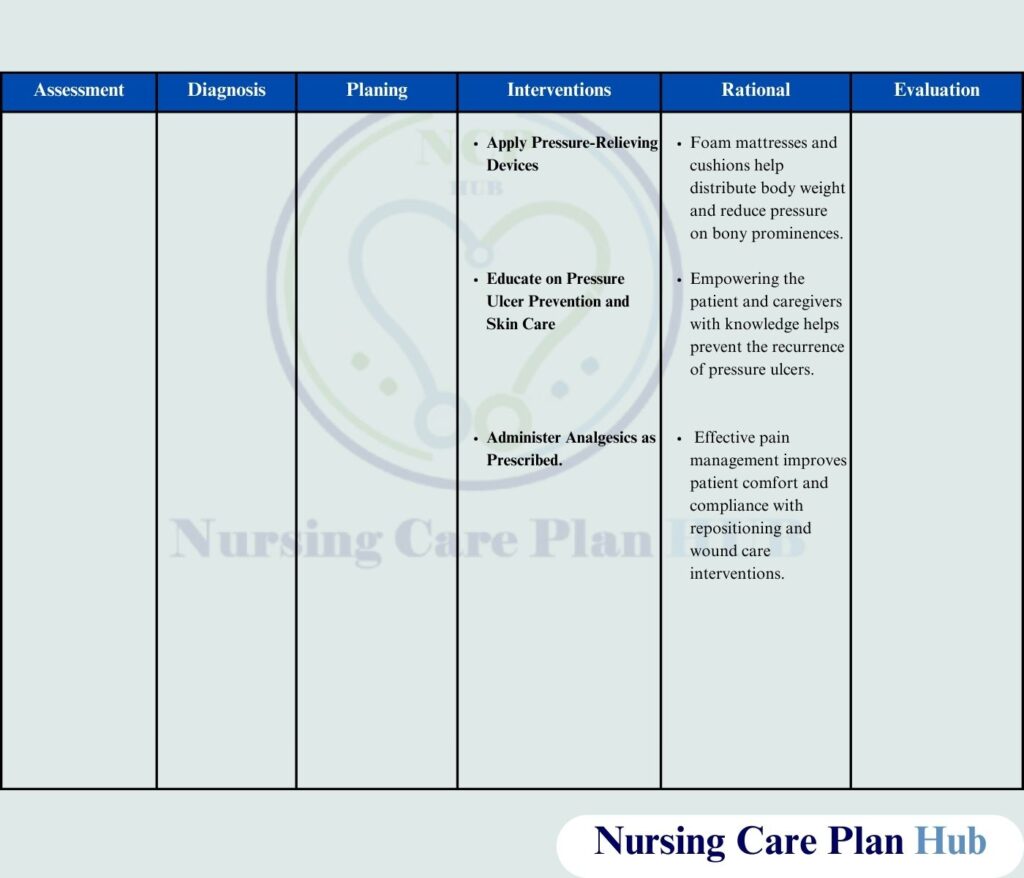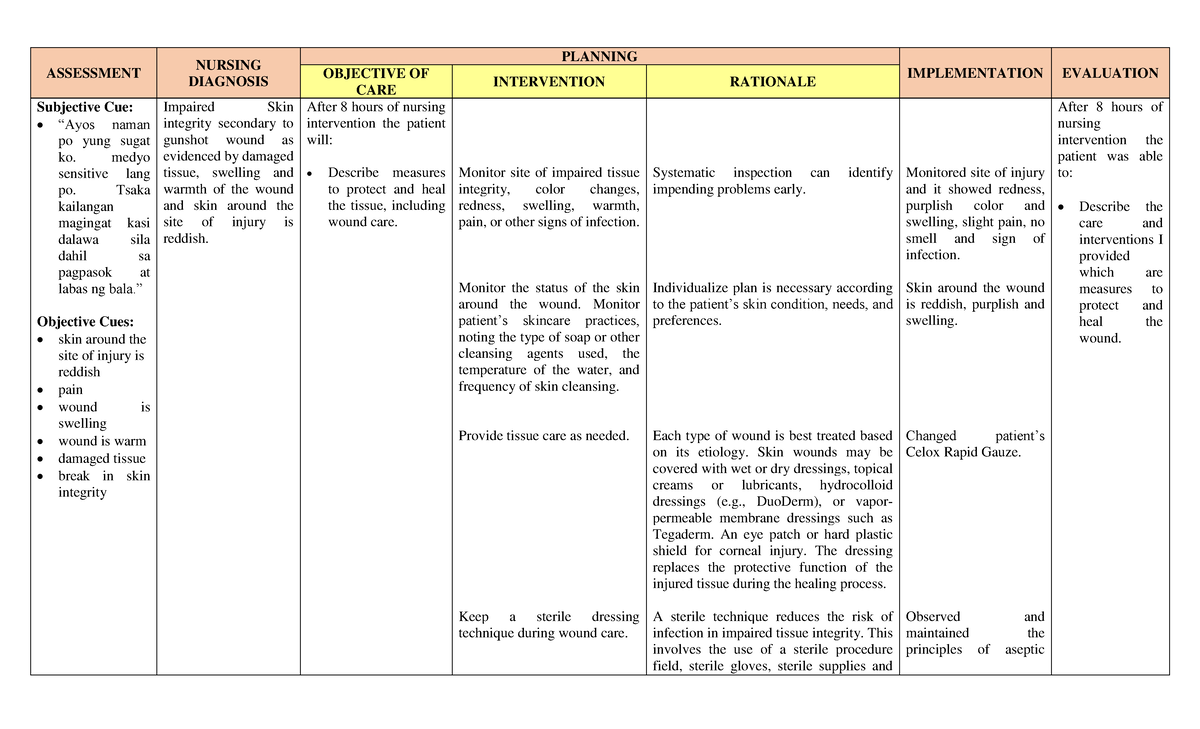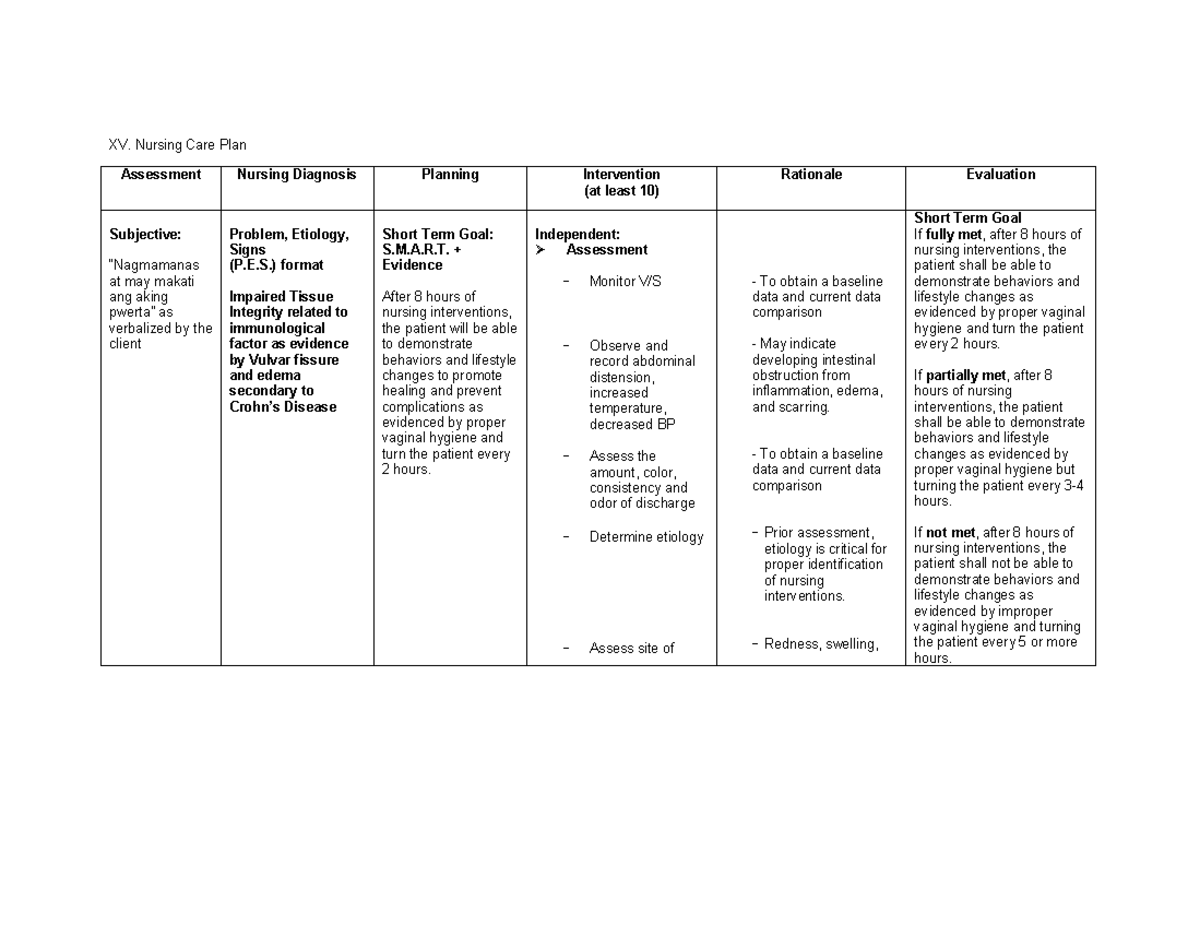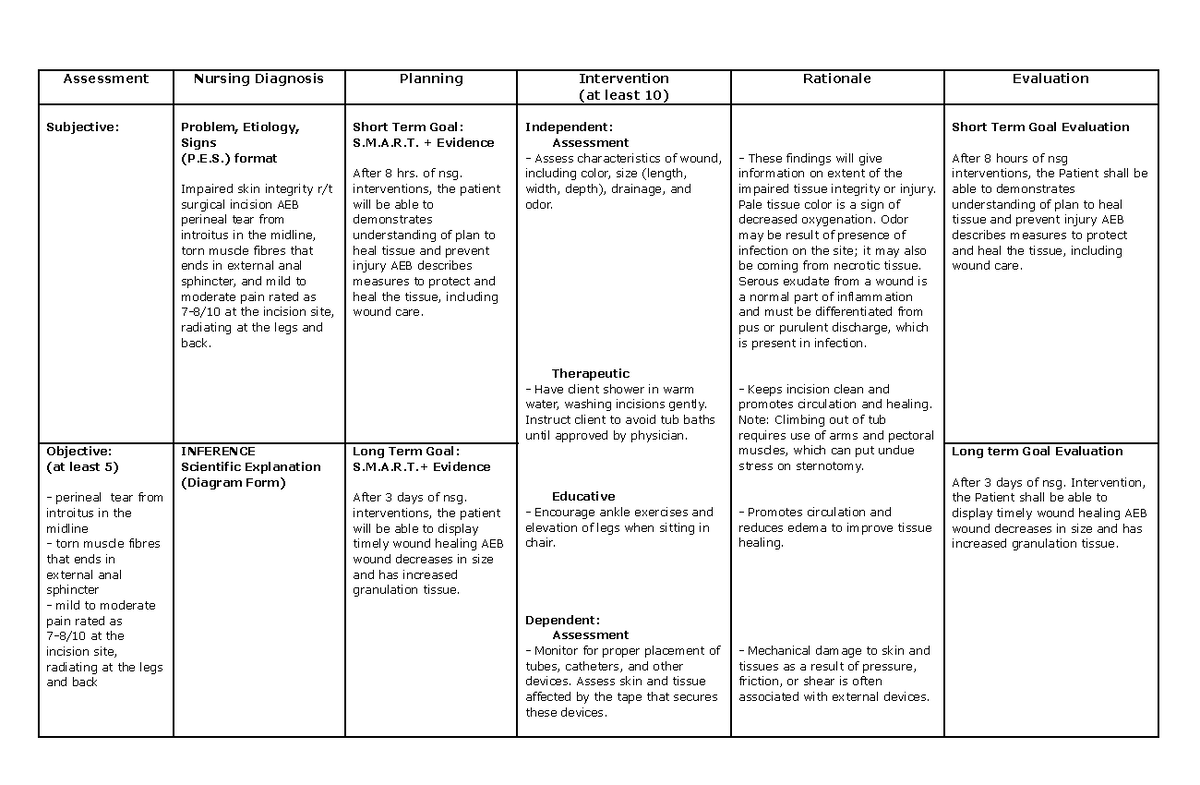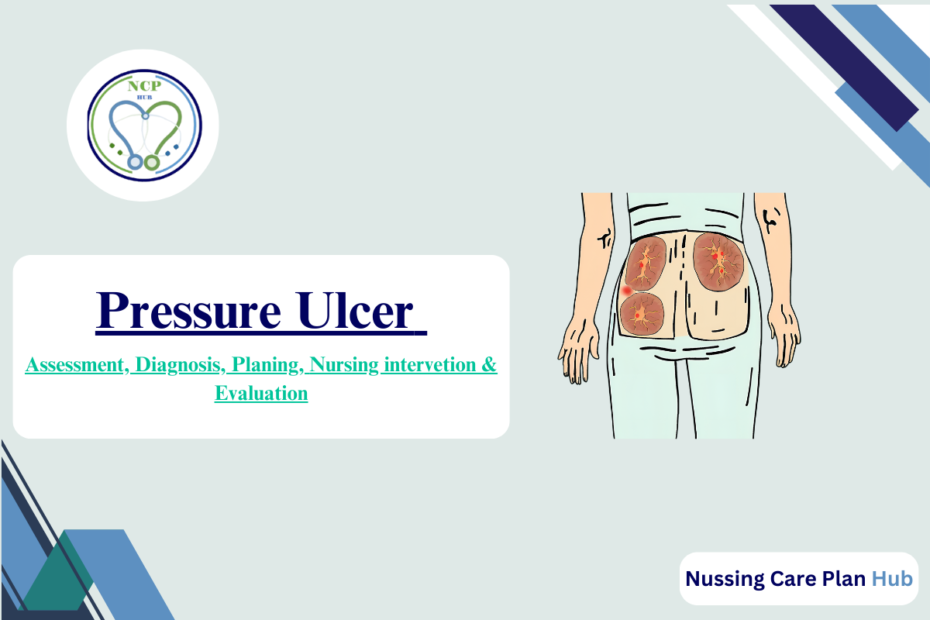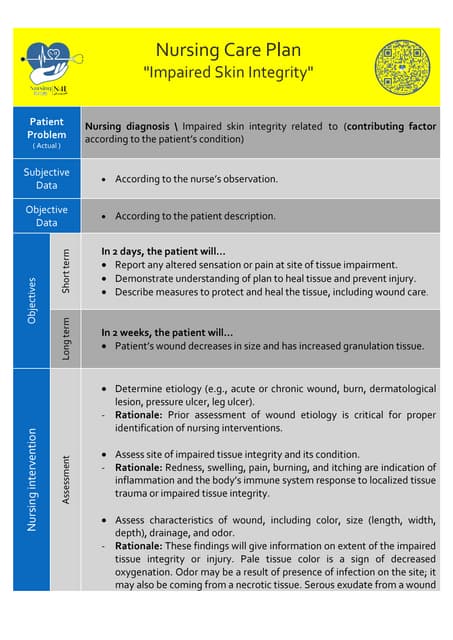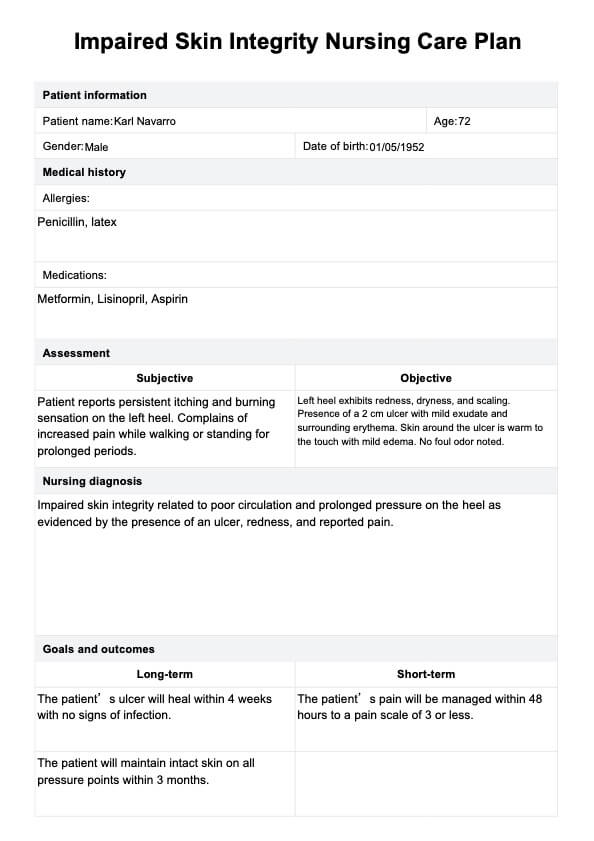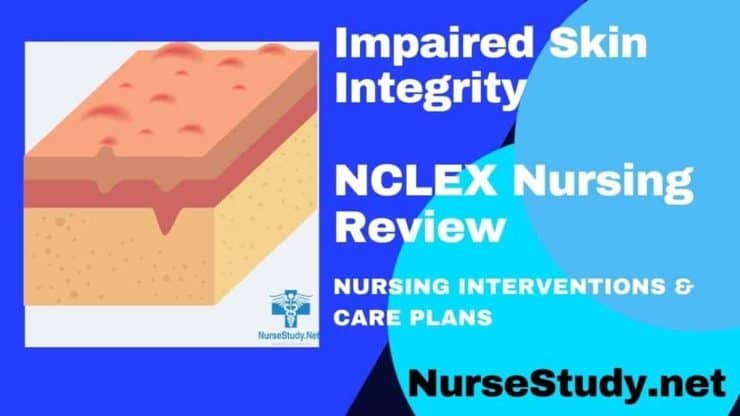Nursing Care Plan Impaired Skin Integrity
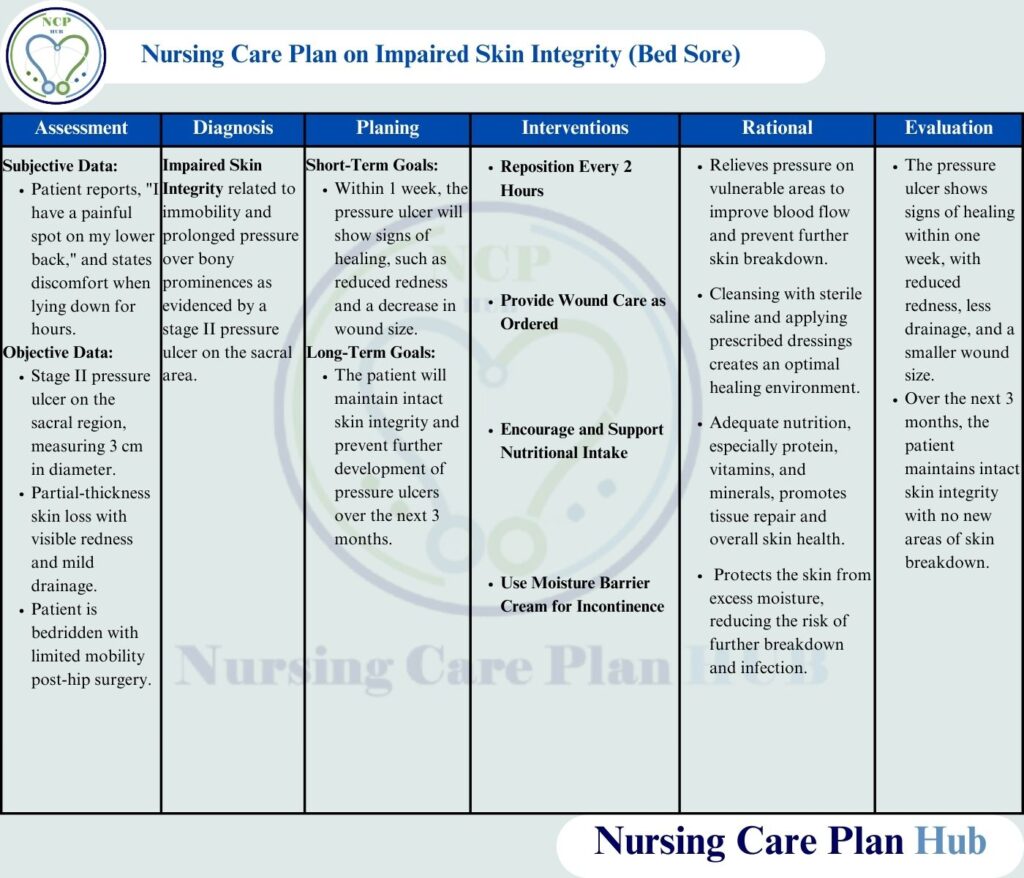
Imagine a fragile butterfly wing, easily torn and difficult to mend. Now, picture that delicate surface representing the skin of someone vulnerable – an elderly patient confined to a bed, a newborn with paper-thin skin, or an individual battling a chronic illness. The reality of impaired skin integrity is a daily struggle for countless people, a silent battle fought against pressure, moisture, and friction.
This article delves into the critical issue of "Impaired Skin Integrity," a nursing care plan focus addressing damage to the epidermis and/or dermis. We’ll explore the underlying causes, the profound impact it has on patients' lives, and the innovative strategies nurses employ to protect and heal this vital organ. Beyond the medical jargon, we aim to reveal the human stories behind the statistics and celebrate the dedication of those who strive to mend what is broken.
Understanding the Landscape
The skin, our largest organ, is much more than just a covering. It’s a complex system that regulates temperature, protects against infection, and allows us to experience the world through touch. When this barrier is compromised, the consequences can be far-reaching.
Impaired skin integrity encompasses a wide range of conditions, from minor abrasions and superficial burns to deep pressure ulcers and surgical wounds. These breaches in the skin's surface create entry points for bacteria, increasing the risk of infection and systemic illness.
The National Pressure Injury Advisory Panel (NPIAP) offers a valuable resource, defining pressure injuries (formerly known as pressure ulcers or bedsores) and providing staging guidelines. Understanding these classifications is crucial for accurate assessment and appropriate intervention.
The Root Causes: A Multifaceted Problem
Several factors contribute to the development of impaired skin integrity. Prolonged pressure, particularly over bony prominences like the sacrum, heels, and hips, is a primary culprit.
Moisture, whether from incontinence, perspiration, or wound drainage, can weaken the skin, making it more susceptible to breakdown. Friction and shear, caused by sliding across surfaces or being pulled up in bed, can also damage the delicate outer layers.
Underlying medical conditions such as diabetes, vascular disease, and malnutrition significantly increase the risk. These conditions compromise circulation and tissue repair, leaving individuals more vulnerable.
Age is another critical factor. As we age, our skin becomes thinner, drier, and less elastic, making it more susceptible to injury and slower to heal. Elderly patients are therefore particularly at risk.
The Impact: Beyond the Physical
The consequences of impaired skin integrity extend far beyond physical discomfort. Chronic wounds can cause significant pain, limiting mobility and impacting quality of life.
Infections stemming from these wounds can lead to prolonged hospital stays, increased healthcare costs, and potentially life-threatening complications. The emotional toll can also be substantial.
Patients may experience feelings of shame, isolation, and depression as a result of their condition. The constant need for care and the visibility of the wound can significantly impact their self-esteem and social interactions.
Imagine Mrs. Davis, an 80-year-old woman recovering from a stroke. Limited mobility and impaired sensation have left her vulnerable to pressure injuries. The pain keeps her awake at night, and she feels embarrassed by the need for constant assistance with hygiene.
Nursing Interventions: A Proactive Approach
Nurses play a pivotal role in preventing and managing impaired skin integrity. Their expertise extends beyond treating existing wounds; it encompasses proactive measures to protect vulnerable patients.
A comprehensive skin assessment is the first crucial step. This involves carefully examining the skin for any signs of redness, breakdown, or infection, paying particular attention to bony prominences and areas exposed to moisture.
Turning and repositioning patients at regular intervals is essential to relieve pressure and promote circulation. Specialized mattresses and cushions can also help redistribute weight and reduce the risk of pressure injuries.
Meticulous skin care is paramount. This includes gentle cleansing with mild soaps, moisturizing to maintain hydration, and applying barrier creams to protect against moisture and friction.
Nutritional support is vital for tissue repair and overall health. Ensuring patients receive adequate protein, vitamins, and minerals can significantly improve their ability to heal.
Wound care is an integral part of the nursing care plan for patients with existing skin damage. This involves cleansing the wound, applying appropriate dressings, and monitoring for signs of infection.
Wound care nurses specialize in this area, utilizing advanced techniques and products to promote healing and minimize complications. They are a valuable resource for patients and other healthcare professionals.
Educating and Empowering Patients
Patient education is a critical component of preventing and managing impaired skin integrity. Patients and their families need to understand the risk factors, preventive measures, and proper wound care techniques.
Empowering patients to actively participate in their care can significantly improve outcomes. This includes teaching them how to inspect their own skin, reposition themselves, and maintain proper hygiene.
For example, teaching a family member how to apply a barrier cream or recognize early signs of skin breakdown can make a significant difference in preventing further complications.
Innovations and Advancements
The field of wound care is constantly evolving, with new technologies and treatments emerging to improve patient outcomes. Negative pressure wound therapy (NPWT), also known as vacuum-assisted closure (VAC) therapy, is one such innovation.
NPWT involves applying a vacuum to the wound to remove excess fluid, promote tissue growth, and reduce the risk of infection. It has proven highly effective in treating a variety of complex wounds.
Advanced wound dressings, such as hydrocolloids, foams, and alginates, provide a moist wound environment that promotes healing. These dressings also protect the wound from infection and minimize pain.
Research is ongoing to develop new therapies that accelerate wound healing and prevent complications. These include growth factors, stem cell therapy, and hyperbaric oxygen therapy.
The Human Touch: Compassion and Empathy
While medical interventions are crucial, the human element of nursing care is equally important. Compassion, empathy, and a genuine desire to help patients heal are essential for providing holistic care.
Taking the time to listen to patients' concerns, address their fears, and provide emotional support can significantly improve their overall well-being. A kind word, a gentle touch, and a listening ear can make a world of difference.
Consider the nurse who patiently sits with Mrs. Davis, listening to her frustration and offering words of encouragement. This simple act of kindness can alleviate Mrs. Davis's anxiety and empower her to participate more actively in her care.
Looking Ahead: A Call to Action
Impaired skin integrity remains a significant challenge in healthcare. Increased awareness, proactive prevention strategies, and ongoing research are essential to improve patient outcomes.
Healthcare facilities must prioritize skin care protocols, provide adequate staffing, and invest in specialized equipment and training. Collaboration between healthcare professionals, patients, and families is crucial to ensure optimal care.
By embracing a holistic approach that combines medical expertise with compassion and empathy, we can make a tangible difference in the lives of those struggling with impaired skin integrity. Let us strive to protect and heal this vital organ, one patient at a time.
In conclusion, the journey of addressing impaired skin integrity is a testament to the unwavering commitment of nurses and healthcare professionals. It underscores the profound impact of compassionate care and the power of human connection in the healing process. The future holds promise with ongoing research and innovation, but the core remains the same: a dedication to protecting and restoring the delicate yet resilient barrier that is our skin.

